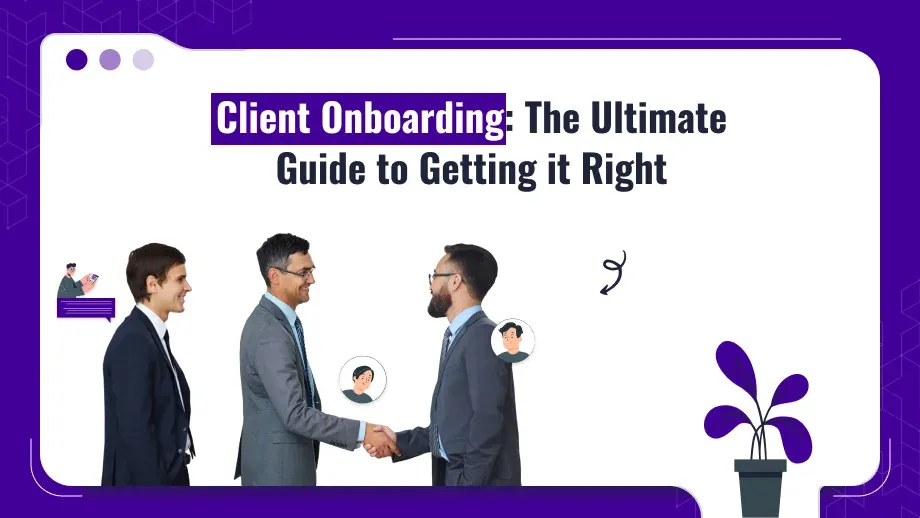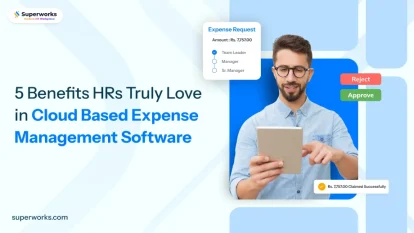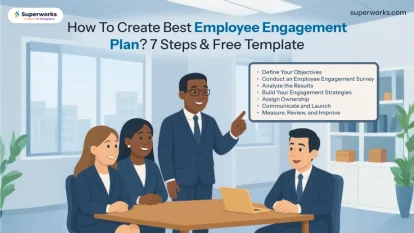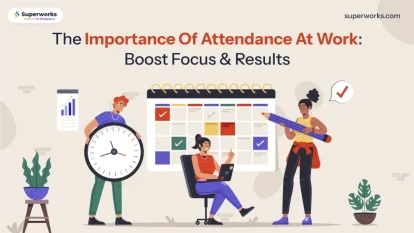
Client onboarding is the to begin with step in confecting a long- term, effective customer relationship. It sets the tone for the whole business- client relationship and lays the foundation for customer satisfaction, believe, and retention. In this direct, we will walk you through how to get customer onboarding right, frompre-onboarding settle topost-onboarding take after- up, and how to use automation to make it all happen.
Whether you’re onboarding a unused customer to a SaaS platform, an office, or any other benefit- based business, this direct will walk you through best hones, steps, and strategies for onboarding.
What’s Client Onboarding and Why Does it Matter?
client onboarding is the process of welcoming new clients, understanding their special conditions, getting them up and running with your items or services, and setting the stage for a successful long- term participation. It’s about advance than just getting clients recognizable with your service it’s about making trust, reducing churn, and getting clients prepared to achieve their goals with your solutions.
A good onboarding process not only hands out from sales to delivery but also provides an opportunity to upsell orcross-sell down the line. It’s a key way to minimize client churn which is a common problem when expectations aren’t met early in the relationship.
Why Client Onboarding is Important:
- First Impressions Count: Onboarding is regularly a client’s first genuine interaction with your business after the sales process. It’s your chance to prove they made the right choice by choosing your service or product.
- Improves Retention: According to Onboarding Statistics, companies with a great onboarding process see up to 50 customer retention. The smoother the customer onboarding experience the more likely clients are to stick around.
- Enables Future Development: Happy clients are more likely to come back for more services or items, allowing you to upsell or cross-sell.
Key Steps of Client Onboarding
1. Pre-Onboarding Prep
Pre-onboarding is the phase where your team gathers information about the client. This stage is critical to tailor the Digital Employee Onboarding experience to the client’s needs. Pre-onboarding typically involves sending a detailed questionnaire to the new client asking:
- What are their business goals?
- What challenges do they face?
- What metrics will they use to measure success?
This data allows your team to create a personalized onboarding experience and guarantees all stakeholders are adjusted on desires. Onboarding new clients with a personalized approach makes them feel valued and more importantly, it shows you’re committed to making a difference them achieve their goals:
Pre-Onboarding Activities:
- Gather and analyze client data.
- Identify stakeholders and decision- makers.
- Clarify customer objects and set measurable success criteria.
Having a clear SLA means there are no surprises later on prevents scope creep and keeps the agreement intact.
2. Contract Finalization and Benefit Level Assention (SLA)
One of the most imperative steps in client onboarding is setting clear expectations for both parties. This is where the SLA comes in. The SLA defines the scope of work, deadlines, and responsibilities so everyone knows who’s responsible for what.
SLA Essentials:
-
- Timelines and Deadlines: Provide clear deliverable dates.
- Responsibilities Define who’ll be responsible for each task on both sides.
- Success Metrics Outline the KPIs that will be used to measure the onboarding process.
Having a clear SLA means there are no surprises latterly on prevents scope creep and keeps the agreement complete.
3. Kickoff Meeting
The kickoff meeting is the official start of the project and a critical step in any agency onboarding process or SaaS onboarding. This meeting ensures both teams are aligned and ready to go. During the kickoff meeting:
- Introduce key team members on both sides.
- Discuss the client board goals and how your product or service can help them achieve them.
- Clarify deliverables, timelines, and communication protocols.
- Address any concerns or potential roadblocks.
4. The kickoff meeting is also a great opportunity to set up communication
channels – whether through email, Slack, or project management tools like Asana or ClickUp – to ensure smooth communication throughout the project.
5. Implementation and Training
The implementation phase is where your team helps the client get started with your product or service. This could be setting up software, providing training, or ensuring the client’s team knows how to use the product effectively. Training is especially important if you’re onboarding a client board to an HRMS software India platform.
Best Practices for Implementation:
- Provide detailed onboarding documents and resources, similar as a “ new client welcome packet ” or “ customer onboarding roster ”.
- Assign a devoted onboarding specialist to guide the customer through the process.
This phase of onboarding new clients ensures they’re comfortable with your product or service and can start deriving value from it as soon as possible.
A better client onboarding experience leads to 2.6 times greater customer satisfaction!
Boost your onboarding with Superworks!
6. Regular Check-ins and Progress Updates
Regular communication is key to a smooth onboarding experience. Once the client is up and running set up regular check-ins to:
- Monitor progress.
- Address any challenges or roadblocks.
- Provide updates on key milestones.
Regular check-ins ensure the client feels supported and their concerns are being addressed promptly. Whether it’s weekly calls or monthly progress reports, keep the client engaged.
Automation Tools for Client Onboarding
Onboarding, whether for new guests or employees, hinges on the tools used to manage tasks, track progress, and maintain flawless communication. Integrating automation into the client onboarding process, can reduce manual work and ensure that no important step slips through the cracks. This is where cloud-based HRMS software comes into play. Additionally, marketing automation and CRM tools help personalize communication and automate follow-ups. They track client interactions and segment data, ensuring a tailored onboarding experience that boosts engagement and satisfaction.
Top Tools for Client Onboarding Automation:
1. ClickUp or Trello
These popular project management tools are used to assign tasks, track progress, and maintain clear communication during onboarding. They help you break down the onboarding process into smaller tasks, each with due dates and assigned team members. No task gets forgotten.
Superworks Advantage:
Superworks integrates task management directly into the onboarding process, like ClickUp or Trello but with onboarding-specific automation. You can set up pre-built templates for common onboarding tasks, auto-assign roles, and track project milestones without needing separate project management software.
2. Slack or Microsoft Teams
For real-time communication, Slack or Microsoft Teams are the way to go. They keep teams connected, answer questions quickly, and keep the client in the loop during onboarding. These tools enable instant feedback and collaboration which is critical for resolving onboarding issues.
Superworks Advantage:
Superworks has built-in messaging tools so you don’t have to switch between platforms. You can set up a dedicated channel for each client and all communication happens within the same employee onboarding software. This creates a single platform where your team and client can chat in real time and have a record of all conversations tied to specific onboarding tasks.
3. Document Sharing Tools (Google Drive, Dropbox)
Document management is a big part of employee onboarding tool like Google Drive and Dropbox allows you to store contracts, onboarding guides, training documents, and more in shared folders so clients can access everything they need.
Superworks Advantage:
Superworks has document management built into the platform, a single place where both internal teams and clients can access documents. Superworks also has version control and electronic signatures so you can manage contracts and ensure the latest version of documents is always available.
4. Client Onboarding Software (like SaaS Onboarding Software)
Specialized onboarding software like SaaS Onboarding Software is designed to manage onboarding from start to finish. These tools allow you to automate steps like sending welcome emails, assigning tasks, and scheduling meetings. They also have onboarding dashboards that give both clients and internal teams visibility into the onboarding process.
Superworks Advantage:
Superworks has all of these features but goes further with custom workflows, real-time analytics, and reporting. Unlike general project management tools, Superworks is built for onboarding so every feature is designed to address the specific challenges of bringing on new clients. It also integrates with your CRM so customer information is automatically peopled into onboarding workflows, saving time and reducing manual data entry.
Communication and Collaboration
Communication during onboarding is key to making the customer feel supported and valued. To keep communication clear throughout the virtual onboarding process try these best practices:
- Set Communication Expectations Early Clarify how frequently you’ll communicate with the customer, through which channels( dispatch, Slack, etc.), and what to expect in terms of updates.
- Use Project Management Tools Tools like ClickUp or Trello can keep your internal team and the customer’s team aligned on tasks and deadlines.
- Provide Accessible Documentation Make sure the client has easy access to onboarding materials like guides, FAQs, and training vids.
Communication builds trust. It’s especially important to keep the customer in the loop during the early stages of onboarding.
Measuring Success in the Client Onboarding Process
To measure the success of your HR onboarding process you require to track the right Key Performance Indicators (KPIs). This will guarantee your onboarding technique is working and meeting the client’s expectations.
KPIs to Track:
- Time-to-Value: How long does it take for the unused client to begin getting esteem from your item or service?
- Client Fulfillment: Use overviews, Net Promoter Scores (NPS), or direct feedback to measure how happy clients are with the onboarding process.
- Churn Rate: Does your onboarding process reduce churn and increase retention?
- Training Effectiveness: Are clients using your product or service effectively? You can track this by monitoring usage data or following up with post-onboarding assessments.
By gathering feedback and tracking these metrics you can improve your onboarding process and ensure ongoing success.
Post Onboarding and Long Term Relationship Building
Once the onboarding phase is complete the focus shifts to long-term client success. Here are a few ways to ensure ongoing satisfaction and build stronger relationships:
- Transition to Account Management: Make sure clients are handed off to account managers or ongoing support teams smoothly. This transition is key to keeping momentum after onboarding.
- Ongoing Checkins: Continue to schedule regular checkins even after onboarding. Regular communication helps to identify new opportunities for growth and make sure the client is getting value from your product or service.
- Post-Onboarding Review: Do a post-onboarding review with the client to see what worked well and what didn’t. This helps you refine your process and make sure future clients have an even better experience.
Summary
Client onboarding is the establishment of a long-term relationship between a business client and its clients. By following the steps in this guide from pre-onboarding planning to post-onboarding support you can guarantee a smooth and happy encounter for your clients. Utilize computerization apparatuses to streamline the prepare, keep communication steady, and gather feedback to improve your onboarding strategy.
A well-executed employee onboarding process sets the client up for success and opens the door for future business openings like upsells or future projects. By taking after each step you reduce risk and increase value for the client and build a relationship based on trust and satisfaction.






